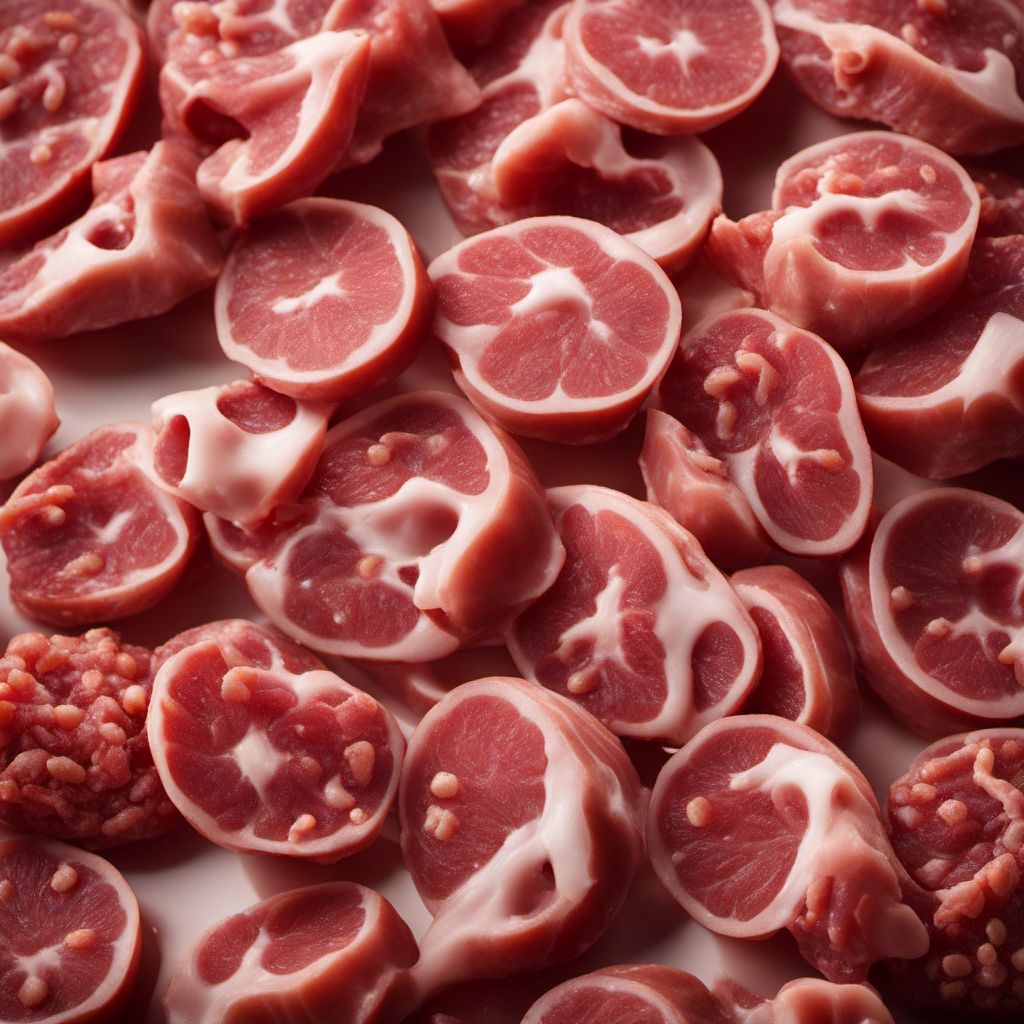
Ingredient
Offal based dishes
"The Hidden Delicacies: Exploring the World of Offal-Based Dishes"
Offal, derived from the internal organs and entrails of animals, encompasses a wide range of ingredients such as liver, kidneys, heart, sweetbreads, and tripe. These ingredients possess distinct characteristics, with liver being rich and velvety, kidneys offering a tender and slightly gamey taste, heart providing a robust and meaty flavor, sweetbreads delivering a delicate and creamy texture, and tripe offering a chewy and gelatinous consistency. Their appearances vary, with liver being deep red or brown, kidneys being small and bean-shaped, heart having a muscular appearance, sweetbreads resembling soft lobes, and tripe displaying a honeycomb-like pattern. These diverse offal ingredients contribute unique flavors and textures to dishes, making them a culinary delight for adventurous eaters.
Origins and history
Offal-based dishes have a rich history that dates back centuries. In many cultures, utilizing every part of an animal was a way to honor the animal's sacrifice and make the most of its resources. Offal has been a staple in traditional cuisines around the world, from the haggis of Scotland to the menudo of Mexico. These dishes have deep cultural significance and are often associated with celebrations or special occasions.
Nutritional information
Offal-based dishes are highly nutritious, packed with essential vitamins and minerals. They are particularly rich in iron, vitamin B12, and zinc, which are vital for energy production, brain function, and immune health.
Allergens
Offal-based dishes may pose allergenic risks for individuals with specific food allergies, such as shellfish or organ-specific allergies. It is important to exercise caution and consult with a healthcare professional if you have any concerns.
How to select
When selecting offal from a grocery store or farmers market, look for fresh, vibrant-colored organs with no signs of discoloration, foul odor, or sliminess. The texture should be firm, and there should be no visible signs of damage or bruising. If possible, choose organ meats from animals that have been raised in a healthy and sustainable manner.
Storage recommendations
Offal should be stored in the refrigerator at temperatures below 40°F (4°C). It is best to use it within 1-2 days of purchase to maintain its freshness and quality. If you plan to store offal for a longer period, it can be frozen in airtight containers or freezer bags for up to 3 months.
How to produce
Producing offal-based dishes at home requires sourcing fresh offal from a reputable butcher or specialty store. It is essential to handle and cook offal properly to ensure food safety. Amateur cooks can experiment with various cooking techniques such as grilling, braising, or pan-searing to bring out the best flavors and textures.
Preparation tips
Before cooking offal, it is crucial to clean and trim any excess fat or connective tissue. Soaking certain offal, such as tripe, in water with vinegar or lemon juice can help remove any residual odors. Offal can be marinated to enhance its flavor or blanched to remove any impurities. Cooking times may vary depending on the specific offal, but it is important to cook it thoroughly to ensure food safety.
Culinary uses
Offal-based dishes are widely used in various cuisines around the world. Liver can be transformed into pâtés, terrines, or sautéed to accompany dishes. Kidneys are often used in stews, pies, or sautés. Heart can be grilled, braised, or used in kebabs. Sweetbreads are prized for their delicate flavor and are commonly pan-fried or braised. Tripe is used in soups, stews, or as a filling for tacos or dumplings. These ingredients add depth and complexity to dishes, elevating the overall flavor profile.
Availability
Offal-based dishes are commonly available in regions where nose-to-tail cooking is embraced, such as Europe, Asia, and Latin America. However, they can also be found in specialty butcher shops or restaurants that focus on traditional or adventurous cuisine.
More ingredients from this category

Meat loaf
Savory Meat Delight

Goulash
"Savor the Richness: Exploring the Hearty Delights of Goulash"

Meat burger (no sandwich)
The Savory Delight: Unleashing the Flavors of a Meat Burger

Moussaka
The Mediterranean Delight

Meat in aspic
Gelatinous Delight

Meat stew
Hearty Delight: Exploring the World of Meat Stew

Meat terrine
The Savory Delight

Meat balls
Savory Spheres of Meaty Delight